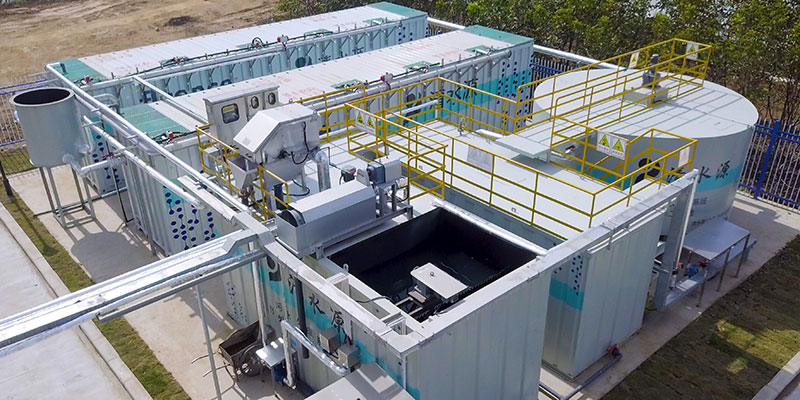
Nitrogen compounds are a major pollutant that must be removed from wastewater. New technologies like the MABR in Fluence’s Aspiral™ plants can ensure high nutrient removal to meet the strictest effluent standards.
The process of removing dangerous nitrogen compounds from effluent is becoming increasingly efficient with new technologies like MABR
Although nitrogen is a nutrient critical for all life, too much of it in water presents a number of dangers to ecosystems and human health. In response to a global increase in nitrogen contamination, many nations are tightening their regulatory standards for nitrogen compounds.
How is nitrogen removed from wastewater? Here are some of the processes:
- Nitrification and Denitrification With Activated Sludge
The most widespread process for nitrogen removal from wastewater is the activated sludge process, which uses nitrification-denitrification to remove nitrate. First, ammonia is oxidized to nitrite, which is then converted into nitrate in aerobic conditions. Heterotrophic or autotrophic bacteria then reduce the nitrate to benign nitrogen gas in anoxic conditions.During the process, wastewater is intensively aerated to nurture the microorganisms that break down dissolved organic matter. Some organic matter is used to grow new cells, and some is oxidized. The new cells are removed from the stream and put in settling tanks as sludge, some of which goes back to the aeration tank. The rest is waste. Traditional activated sludge processes are highly energy intensive due to the air compression needed for aeration, and the process is demanding to maintain.
- Microalgal Growth
Microalgae are simple cells that can double their biomass in 24 hours, producing valuable metabolites like fats, proteins, sugars, and bioactive compounds. They can be recovered from wastewater as fertilizer and animal feed. Microalgae have been used for less energy-intensive nitrogen removal for more than 50 years, but recovering microalgae as a resource can be inefficient and costly. - Bioelectrochemical Systems (BESs)
BES uses the interaction between microbes and a solid electron acceptor to remove contaminants like nitrogen from wastewater while generating electricity. The process is being studied for various wastewater streams and resource recovery. It can effectively remove organics from low-load wastewater, but its efficiency varies depending on wastewater composition and strength, hydraulic retention time, and configuration of reactors. - Anaerobic Ammonium Oxidation (Anammox)
Anammox is an energy-efficient, microbiologically mediated process for nitrogen removal. The bacteria in the process oxidize ammonium anoxically, with nitrite as electron acceptor, to create nitrogen gas. Anammox is suitable for treatment of high-ammonium, low-organic-load wastewater. Further study is needed before broadening its application.
MABR: A New Paradigm for Nutrient Removal
Like activated sludge, membrane aerated biofilm reactor (MABR) wastewater treatment uses microorganisms to nitrify and denitrify wastewater, but MABR uses a self-aspirating, spirally-wound membrane with a large surface area to passively deliver oxygen instead of manually pumping air into the water. There are several key advantages to the configuration.
Aeration is done at near-atmospheric pressure, virtually eliminating the costly air compression that accounts for 40-60% of energy consumption in legacy processes.
The membrane takes advantage of biofilm, a resilient, natural layer of microorganisms that forms on the oxygen-rich surface of the membrane, where the bacteria can use the oxygen most efficiently. In bubble aeration, most air bubbles to the surface before microorganisms can use it.
The conditions in the rest of the MABR tank remain anoxic, so the denitrifying anaerobic bacteria can do their work in the same tank as the aerobic bacteria. This process of simultaneous nitrification-denitrification (SND) allows for a smaller footprint, compared to legacy processes that require multiple chambers.
While operating an activated sludge plant usually requires specialized personnel, Fluence’s packaged MABR, Aspiral™ modular units, can be operated and monitored via a smart device.
While some promising processes for nitrogen removal are still under study, MABR is an extensively tested technology available in a number of configurations for wastewater treatment plant upgrades, dedicated projects, and decentralized applications. Contact Fluence to learn more about MABR’s superior nitrogen removal.
